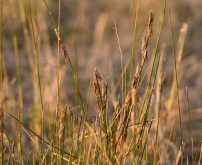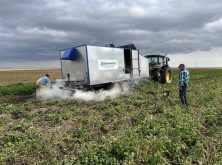Q: What other weed management tools should I consider in addition to herbicide rotation?
A: Agriculture and food production has benefited from weed control with herbicides for many decades. Careful use of herbicides is a safe, quick and effective means to stop weeds from competing for water, nutrients and light. This is not a perfect system, as natural tolerance of certain weeds to certain herbicide groups can occur quite quickly. This becomes a severe issue if a very common weed becomes resistant to more than one common and effective herbicide group.
We have seen this happen with wild oat resistance to both Group 1 and 2 herbicides and kochia resistance to both Group 2 and 9 herbicides. The first step we often consider is rotating herbicide groups. Rotation of herbicides is important to mitigate the risk of resistance, but we often ignore the other weed control tools.
Read Also

Claas brings 1000 Series SP forage harvesters to Canada
In mid-August, Claas unveiled its new line of Jaguar forage harvesters at an event in Visalia, California, deep in the heart of that state’s dairy region.
Good seeding and farm practices will reduce weed success and will extend the use of herbicides for many more years. Many practices cost the farm nothing or are inexpensive. When developing a weed control plan with herbicide rotation in mind, consider the following steps to help your herbicides:
- Be aware of your weeds. Scout fields, identify and remove new weed species, control weed patches and keep records for control in the future.
- Grow crops suited to your farm and fields and the weed pressure present. If you know there is a specific weed problem in a field, plan control before seeding.
- Create a competitive seedling stand. Use clean, certified seed, do not use a low seeding rate, do not use wide row spacing and do not seed too deep.
- Ensure your crop has adequate soil and fertilizer nutrients and do not broadcast fertilizer. This will provide weeds equal access to nutrients.
- Proactively control other pests as required. For example, use the best of seed-applied insecticides to control flea beetles in canola rather than wait for damage to occur.
- Do not create weed seed factories. Seed saline and other marginal areas to forages and maintain weed control in non-seeded areas and compacted field entries.
- Practice sanitation at harvest. Prevent weeds from forming mature seed, do not transport weed seed on headers between fields and take note of severe weed problems during harvest.
– Lyle Cowell, PAg, CCA, is the manager of agronomy solutions in northeast Saskatchewan for Nutrien Ag Solutions.















